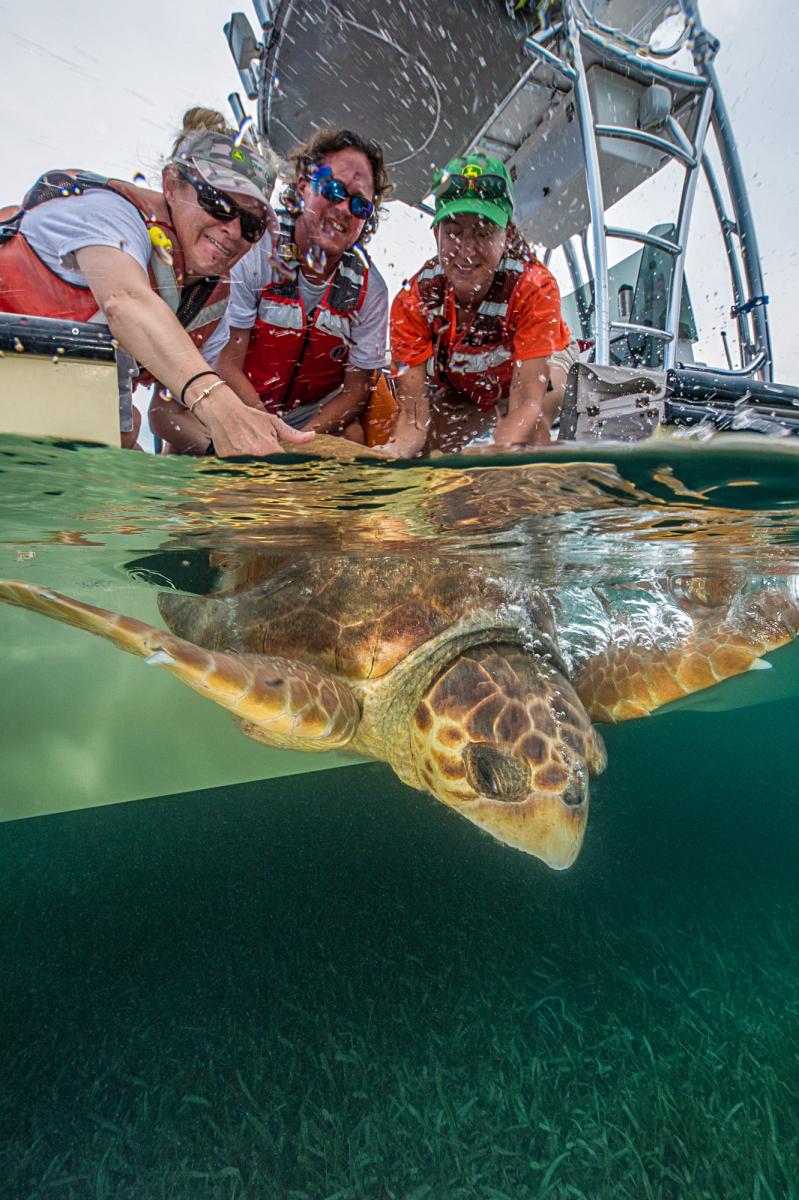A new resource offering guidance on in-water sea turtle data collection is now available for researchers, restoration planners, and resource managers working in the Gulf of Mexico.
The guidance was developed as the culmination of the Gulf-Wide Comprehensive Plan for In-water Sea Turtle Data Collection project, and provides a resource for researchers investigating sea turtle abundance and demographic questions. The focus of the project, selected by the Open Ocean Trustees as part of its second restoration plan, was to develop a strategic plan for coordinated data collection efforts across the Gulf of Mexico.
A committee of sea turtle experts with decades of experience in sea turtle sampling developed the plan over two years. Project collaborators, including the National Fish and Wildlife Foundation, developed this consensus guide for collecting biologically and statistically robust, in-water sea turtle data in a comprehensive, coordinated, and standardized fashion.
Collecting data in this way will inform understanding of sea turtle distribution, survivorship, recruitment, population structure, abundance, and trends. This knowledge will help support restoration of sea turtle species injured by the 2010 Deepwater Horizon oil spill.

The plan proposes a long-term, phased, and adaptive approach to the collection of in-water sea turtle data, in the following order of priority:
-
Phase 1: Exploration and identification of a limited number of prioritized index sites in neritic, or shallow open water above the continental shelf, waters in the U.S. Gulf of Mexico.
-
Phase 2: Continued monitoring of effective Phase 1 index sites and site refinement, based on initial results and sampling considerations per Phase 1, in the U.S. Gulf of Mexico.
-
Future In-Water Plan Considerations: Monitoring of non-U.S. Gulf of Mexico waters. To allow for expansion and aggregation of data collected in a systematic way over a large spatial scale, additional regions can be added as international partnerships develop over time. Integration with other programs and incorporation of emerging technologies would also be considered during this stage.
We also send updates out via email. If you haven't already, please take the opportunity to sign up for e-mail updates today to receive the latest news from all the Deepwater Horizon Trustees.

